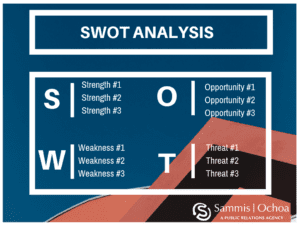It’s no secret that public relations has completely branched off into its own separate entity apart from marketing and advertising.
Because of this, businesses/political campaigns/non-profits alike have all benefited from building good relationships with their communities while furthering their outreach in a positive light.
A good PR team works with you to discover the best parts of your business and all the things that make it special. We do this by formulating a communications plan tailored to your needs, depending on your desired outcome.
Pound-for-pound I’ll argue that an effective PR team can generate more traffic than a million dollar advertising campaign will. Often for much less money.
Why?
Because this generation of human beings has been trained to ignore ads.
Our friends in the advertisement world use the phrase “Banner Blindness” which boils down to a term used for the selective perception of people to ignore any content they may perceive as an ad. There is actual science behind this, and if you’d like to read more about why public relations will eventually trump advertisement in the very near future, check out this article here.
For now, I’ll keep this article focused solely on PR.
So the question remains, when is a good time for your company to get involved with a public relations team? Start by asking yourself these questions:
- How effective am I in the community that I want to be a part of?
- Is the story of my brand consistent, does it match in tone?
- How many times does my company appear in the news cycle?
- What does my social media campaign look like from the outside? Am I satisfied with the results?
After answering all the questions above and performing a communications SWOT analysis for your own business, this will give you a starting point for a solid communications plan.

For those of you who have never heard of a SWOT analysis before, it’s an assessment tool that measures companies overall performance. The analysis looks at four components- Strengths (internal), Weaknesses (internal), Opportunities (external), Threats (external). Most PR companies perform a SWOT on potential clients in order to provide an in-depth report on how their services will benefit a companies overall media value.
Click here to learn how to construct your own SWOT analysis like a pro.
Once you have figured where you’re packing and where you’re lacking, you are ready to take a deep dive into outreach.
Next is where the hard work comes in.
Start by creating an overall outline for your communications plan. Make sure to start with the end in mind and build a calendar full of media drops, community events, and plan on doing lots of social media engagements.
In this step, it is vital to measure the number of hits your website is getting. Personally, I use websites like NeilPatel.com to help me measure the number of visitors that our website receives.
It’s important to frequently benchmark your following and measure the level of engagement your website is receiving.
Specifically, where is it coming from?
You’re going to find out that some strategies are more effective than others. Record website traffic, social media interactions and followers to figure which strategies provide the highest level of engagement and tailor to those methods.
Study trends and incorporate them into your outreach plans. Current events, pop-culture, or anything with a fanbase can be played-off of and used to your advantage. Events that sync with upcoming blockbusters are always fun and provide outreach to a larger audience.
We hope this helps and to discuss more creative ways that your business can excel at public relations, email me at Chris@sammisochoa.com or call us at (210) 390-4284
-CR
